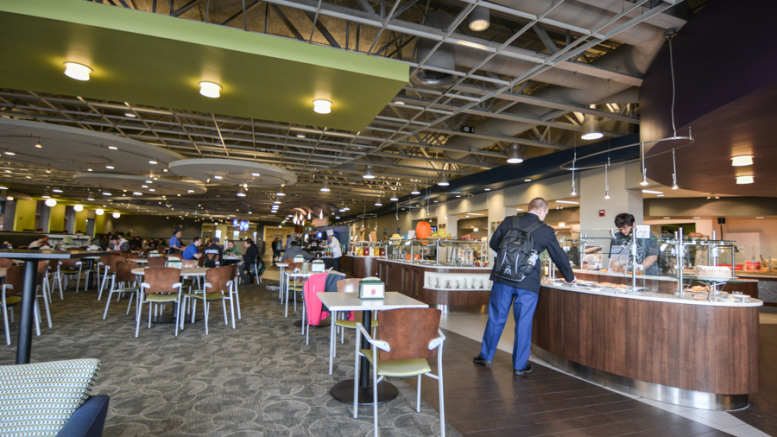All students struggle with packed schedules at some point or another, causing their diets to be neglected. This has brought up the prospect of implementing a reusable container program among some students on campus; however, at the moment, McDaniel doesn’t have plans for such a policy.
A student who wished to remain anonymous raised concerns over the summer. She states, “students are unable to carry the food they purchased out of the dining hall, and are forced to sit down and eat at very specific times of the day.” She, like others, has struggled with having insufficient time to sit down in Glar and eat a full meal. The student adds, “I recall having to skip lunch at times because I saw no point in waiting in line for 10 minutes to only eat ¼ of my meal.” This brought up the idea of a reusable container plan in Glar as a solution.
In response to the issue of time, Dean Gerl, who oversees dining on campus, states, “Glar opens at 7 a.m., and is open until 7:30 at night continuously… there is always going to be a way for a student to have a meal… that’s a 12-hour period.” Gerl, alongside Rita Webster, the General Manager of McDaniel Dining Services, states that the hours have extended over the years in order to better serve students with a variety of schedules. Gerl advises students to consider dining times while planning their schedules and to be adaptable when time is tight around meals.
This, however, does not fully address the issue of students being unable to consume their full meals, hence the idea of a reusable container program. Many colleges and universities across the nation, such as Virginia Tech, Indiana State University, University of Wisconsin-Stout, and Warner Pacific College, among many others, have implemented such policies. For a modest annual membership fee, students at these schools can remove containers from select dining locations.
Granted, such programs are subject to regulations. For example, at University of Wisconsin-Stout, students are limited to a single entrée; meanwhile, at some schools, students have as little as 10 minutes to fill their containers and exit the dining facility. Additionally, at some larger public universities, like the University of Delaware, students claim to have the ability to remove as much food as they’d like.
Currently, however, McDaniel is not exploring such a program as a possibility. The main concerns are cost, as well as health and safety.
In full, Gerl states, “I think that there are other things that we would want to look into and pursue. I think we’re trying to keep meal plans from [increasing in price] more than necessary.” Webster says, “the main concern I have is safety,” citing her role in keeping the food at specific temperatures safe for consumption.
Gerl elaborates further on this issue of cost, saying, “There’d be students that would walk out with just a salad… I’ve been in situations where students walk out with an entire container of meat, or an entire container of ice cream sandwiches.” Gerl and Webster assert that the most significant reduction in food waste came when Glar went tray-less. However, according to Spencer Walker, a student at the University of Delaware, students are more likely to take food items they’ll actually eat when filling a container to eat elsewhere.
Another major concern beyond food consumption has to do with labor – both Gerl and Webster worry that such a policy would necessitate the employment of more workers to monitor the containers. The McDaniel student mentioned earlier, however, claims that there’d also be a reduction in dish room labor since students would be cleaning their own containers.
Webster gives examples of many on-campus options that students can use. At the Pub, for example, students can have hot meals cooked to order, which have a “to go” option. Additionally, McDaniel Dining Services has “meals to go,” which allows students to have packed lunches – a service predominantly used by athletes and students with off-campus internships. Nonetheless, compared to Glar swipes, many students have relatively few meal exchanges to use, and “meals to go” have been criticized as being quite small.
Additionally, Gerl brings up the several retail locations on campus. Moreover, she says, “students can walk out now with desert items, coffee; we’ve expanded hours to meet these needs. We were not always open this amount of time.” Nonetheless, in utilizing such locations, students are more likely to run out of meal exchanges or end up spending money beyond their 50 McDaniel Bucks per semester.
While many of us struggle to squeeze mealtimes into our schedules, McDaniel is not currently pursuing such a program. For now, students can pursue options beyond Glar for their busiest times and otherwise adapt. Students are encouraged to get in contact with Webster if meal interruptions become an issue.





